Colors and breeds of decorative ferrets
Ferrets are nimble animals from the weasel family. With their cute little face and lively character, they are able to fall in love with themselves at first sight. Before you get this unusual animal, you need to figure out what breeds of ferrets exist and how they differ from each other.

Colors and breeds of decorative ferrets
Ferret species
The ferret is an animal from the weasel family. The animal is nocturnal and hunts rodents, birds and other small animals in the wild.
Unlike wild relatives, the ferret, or domestic ferret, has a calmer disposition and does not show aggression towards the owner, although there are often cases of improper upbringing of the pet, then the animal feels like a master of the situation and can bite and attack household members.
Zoologists do not distinguish as such breeds in this family and tend to divide ferrets into groups. They owe their names to habitats and fur colors:
- The steppe ferret is the largest member of the species. Its body length can reach 55-58 cm, and its weight is about 2 kg. The animal lives throughout the continent, from Western Europe to the Far East. The fur is represented by a long thin pile of a dark color and a lighter shade of underfur. The tail is long fluffy with dark hair at the tip. The feet also have a darker tone than the body. There is a characteristic mask on the face. Females are very fertile and can produce up to 18 puppies in one litter.
- The polecat has a more compact body. The length of the body reaches 40-43 cm, the length of the tail is at least 16 cm. The weight of the animals ranges from 0.9 kg in females to 1.5 kg in males. Due to its small size and weight, the animal is very dexterous and graceful. The colors of the ferrets vary, depending on the region of their habitat, but the darker belly and tail remain unchanged against the background of the rest of the body. The color of the main fur is white, red and brown. These ferrets live all over Europe up to the foothills of the Urals. Puppies at a young age have a juvenile mane: long hair on the nape that disappears with age. There are up to 6 cubs in a litter.
- The black-footed ferret lives only in North America and is on the verge of extinction, but thanks to the protection and artificial increase in the population, their population has grown to 1500. These are the smallest representatives of the species. Their body length is no more than 39-42 cm, and their weight is only 300 g. The peculiarity of their heterogeneous color is that at the base the hair is creamy or almost white, and at the ends it is black or dark brown. The color of the face is called "carnival" because of the unusual markings around the eyes and nose.
- The ferret is a domesticated form of the forest ferret. These animals are great for home keeping, as they have a more docile character.Ferrets are much larger than their wild ancestors and reach 55-60 cm in length with a weight of about 2 kg. Thanks to many years of selection, this group has a huge number of different shades of wool. Ferrets can give offspring both with representatives of their group, and with wild individuals.
In addition to these groups of ferrets, there was, although not for long, a group of animals with ridiculous names of honoriki, obtained by crossing a ferret and a mink. Now honoriki are almost never found, since the mink found itself under the threat of extinction.
Variety of colors
Surprisingly, the colors of domestic ferrets have reached an extraordinary variety in a fairly short period of time. In order not to get confused, you need to clearly know how one color differs from another.
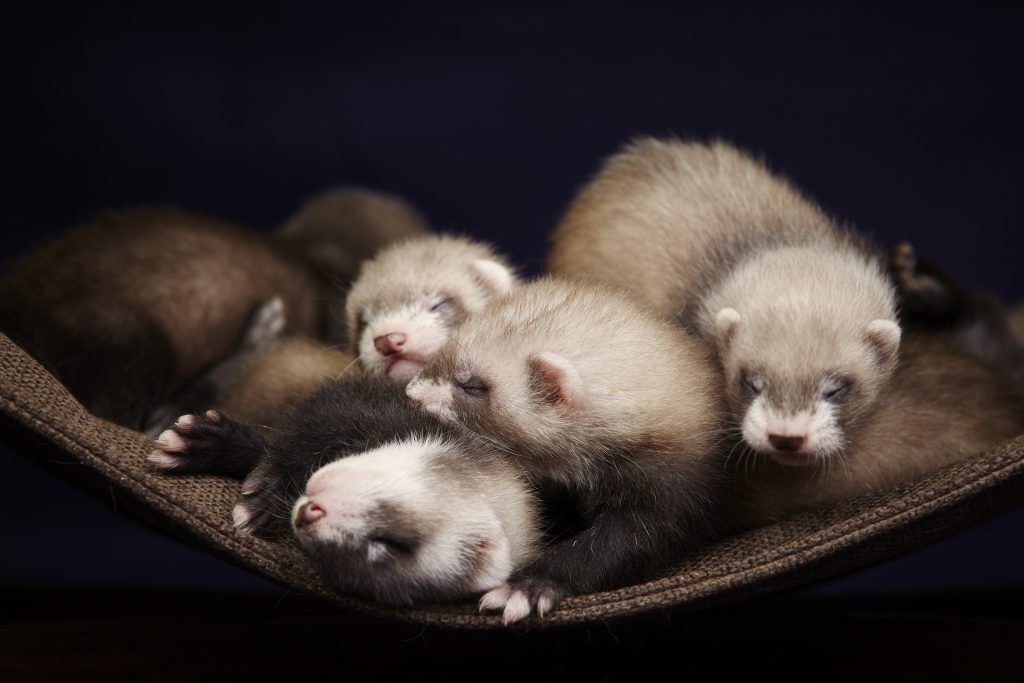
Variety of colors of domestic ferrets
Ferrets are characterized by the predominance of one or another primary color, as well as by the color of the edge, eyes and nose. An important part is the markings, which are represented by white spots. They also distinguish ferrets even with similar coloration. Sable is the closest to the wild color of their ancestors.
The most common decorative colors
Albino
Albino (furo) is distinguished by the complete absence of pigment responsible for the pigmentation of the skin, fur and eyes - melanin. The outer hair is predominantly white, but sometimes creamy blotches are found. The underfur of the animal is exceptionally white, the nose is pink, and the eyes are red. In the wild, individuals of this color are also found, but this is an extremely rare phenomenon.

Ferret Albino
White ferret
The ferret is white with black (dew) or blue (beat) eyes, similar in color to an albino. The only difference is in eye color. Animals of this color more often than others suffer from deafness due to genetic abnormalities, but they remain the most expensive color of ferrets.
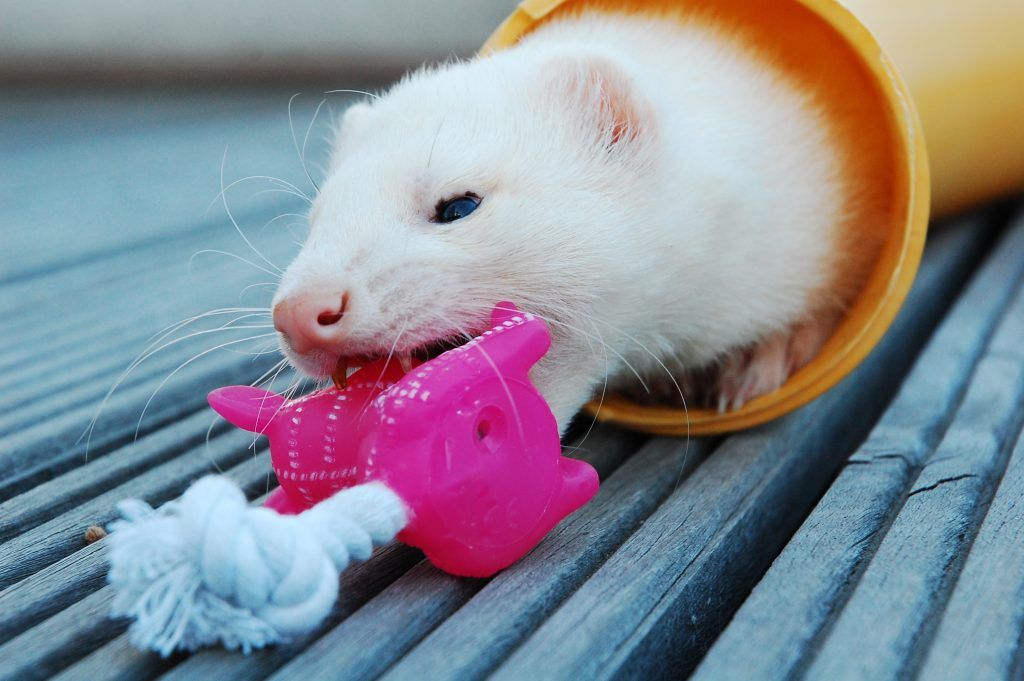
Ferret with blue eyes
Sable color
The sable color is characterized by the presence of a dark color from the tip of the nose to the very tail. The undercoat ranges from white to creamy. The main color is dark brown or ash. The eyes are completely black. The sable color is one of the most common among breeders.
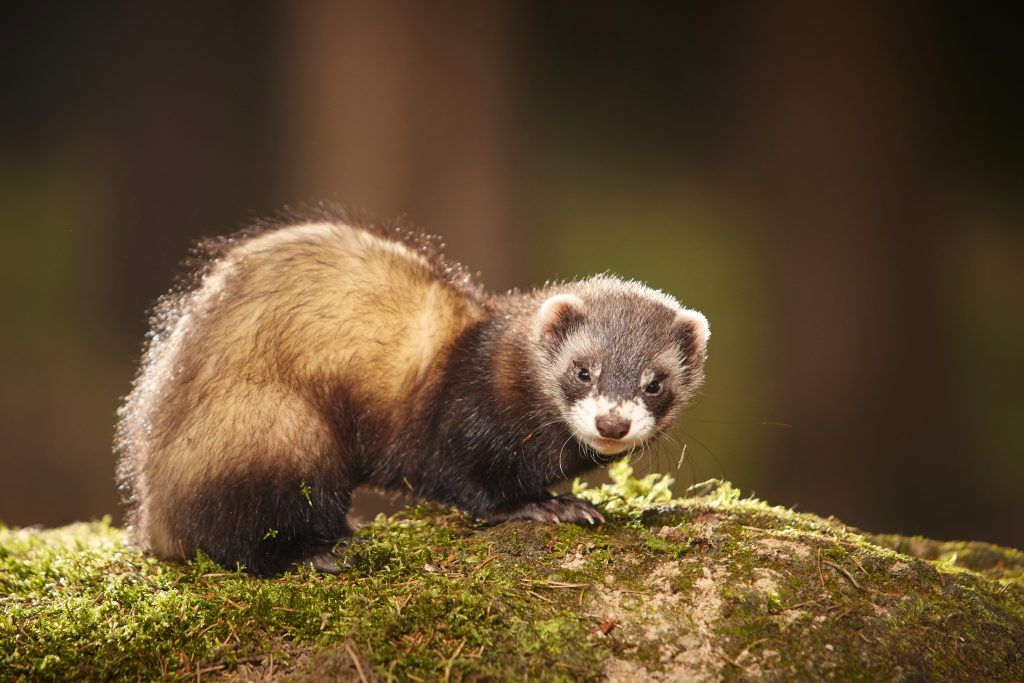
Ferret Sable
Sable with markings
The marked sable is very similar to the previous color. But these ferrets are distinguished by white mittens on all 4 legs. They are usually no higher than the wrist. Also, white markings are observed around the nose and on the chest, the nose remains dark. The ferret, which has a sable color, is distinguished by dark eyes.
Blaze
Blaze has a huge number of colors, but an important detail is a solid white stripe running from the nose to the neck through the entire head. There are also white mittens on the front legs.

Ferret Blaze
Champagne
Champagne has an incredibly beautiful shade of milk chocolate. The guard hair is of this particular color, and the underfur is white or light golden. The darkest hair in the area of the tail, paws and abdomen. The back and head of the ferret have a lighter shade. Eye color is varied. There are individuals with black, dark brown and pink eyes. The noses are predominantly pink.
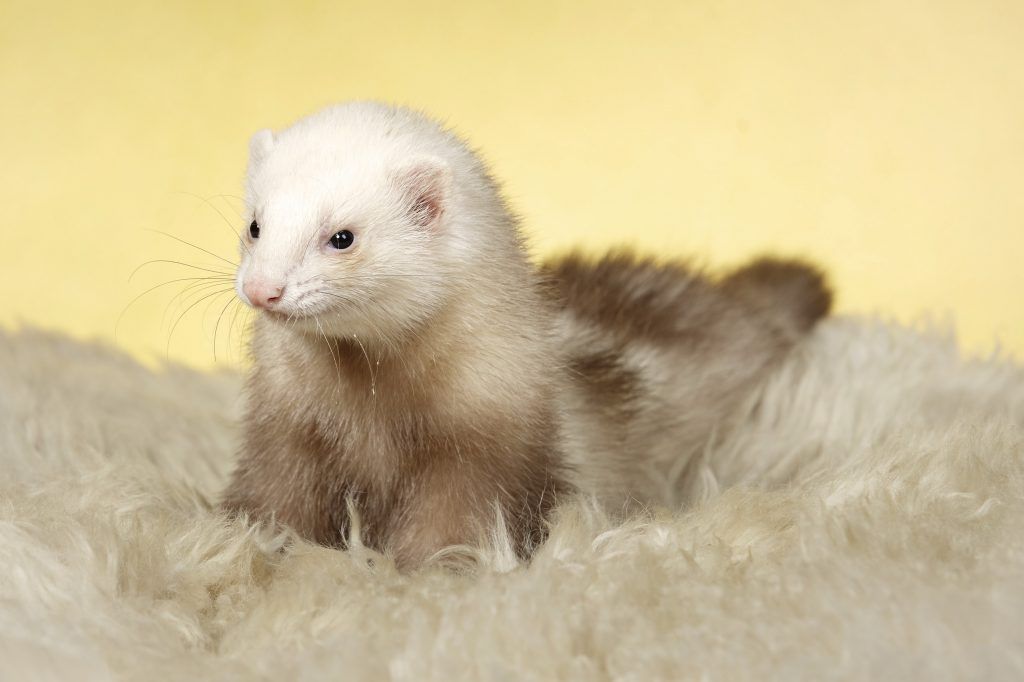
Ferret Champagne
Chocolate color
The chocolate color is similar to the sable color of the guard hair, but the pet's undercoat is beige or wheat. These ferrets have a mask on their face, as well as darkened paws and a tail with copper-colored hair. Their eyes are dark, and their pink nose has a brown T-shaped pattern.
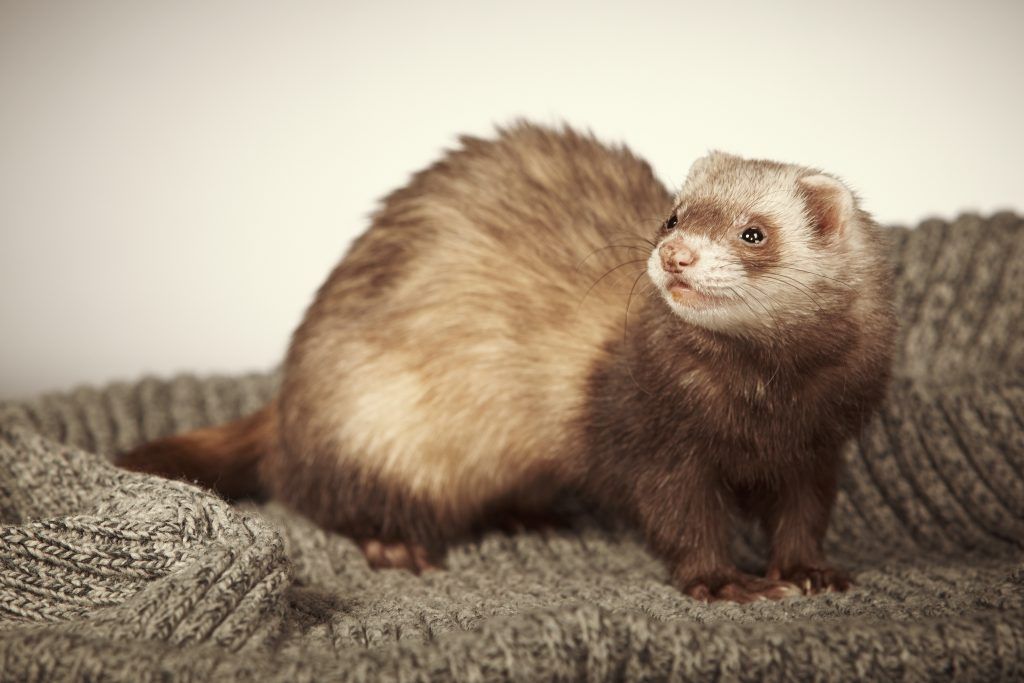
Ferret of chocolate color
Chocolate Marked
Chocolate Marked also has a reddish-copper top coat and light undercoat, but white mitten marks are present on the feet.
Cinnamon
Cinnamon or cinnamon is a rather unusual color that is very popular among breeders. The main color is brown-copper, darkens towards the tail. The underfluff is presented in a beige or creamy shade. Cinnamon's noses are pink, but there are 2 types of eyes: black and burgundy.

Ferret Cinnamon
Cinnamon with marks
Cinnamon with markings is practically indistinguishable from the previous color, but has white markings on the front and hind legs.
Pastel color
The pastel color comes in a wide variety of colors, but the pastel ferret has mostly light guard hair. Because of this, the colors appear slightly faded, faded. The nose is pink or beige, but the eyes are dark or ruby.
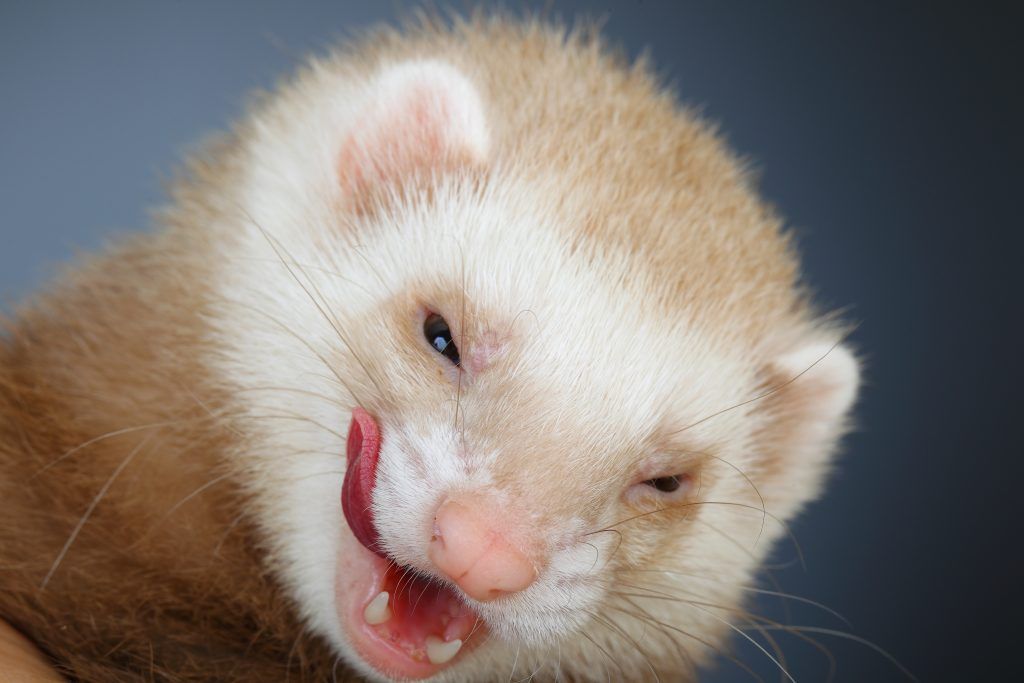
Pastel ferret
Dalmatian
The Dalmatian has a rather unusual coloration for ferrets. For a long time it was believed that such individuals are susceptible to Waardenburg syndrome - congenital deafness. This syndrome really reflects a direct connection between pigmentation and hearing, but, thanks to conscientious breeding work, the ferret, whose color is based on white, is practically not susceptible to it.
The main color is white, but the markings on the head and body are black. The nose, certainly pink, may be interspersed with black in small quantities.
Silver color
Silver is distinguished by a pale beige or white undercoat and an ash gray guard hair. Ferrets of this color are highly valued among amateurs and breeders for their unusual fur. White mittens are allowed on the paws. The nose of silver ferrets is exceptionally pink.
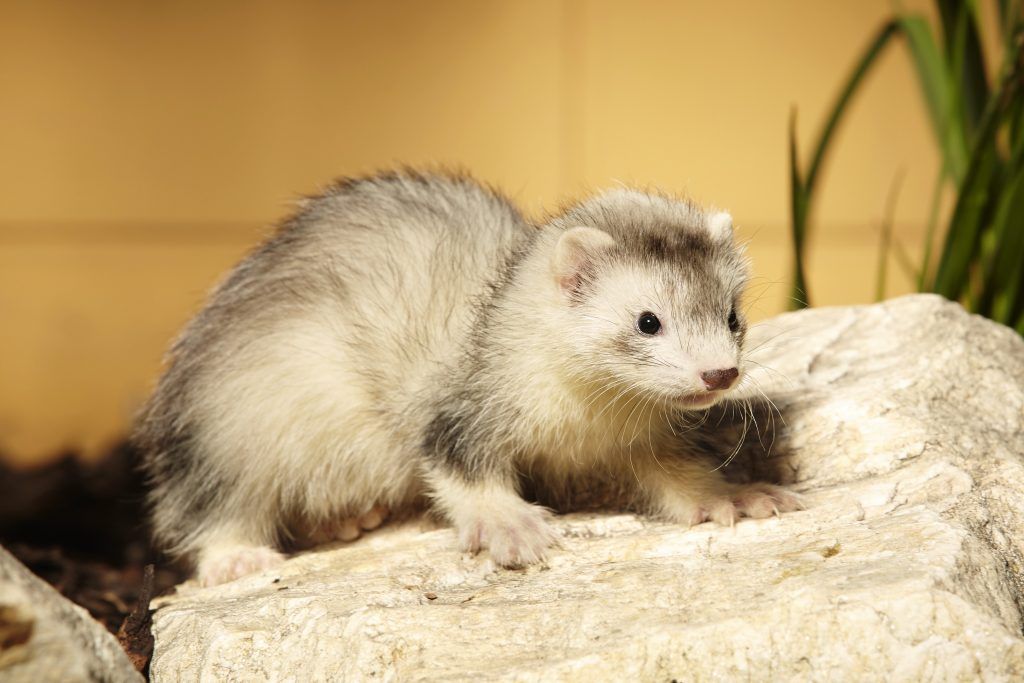
Ferret Silver
Panda
Panda is a luxurious color. However, pets of this color are often deaf. This is a genetic defect. Not all animals are sick, but the chance is very great. At the moment, breeding work is underway to eradicate this deficiency.
A panda-colored ferret has a white head, shoulders and chest. Her paws are dark, like her tail. The nose is most often pink and the eyes are dark brown. It is very rare to see a panda with ruby eyes.
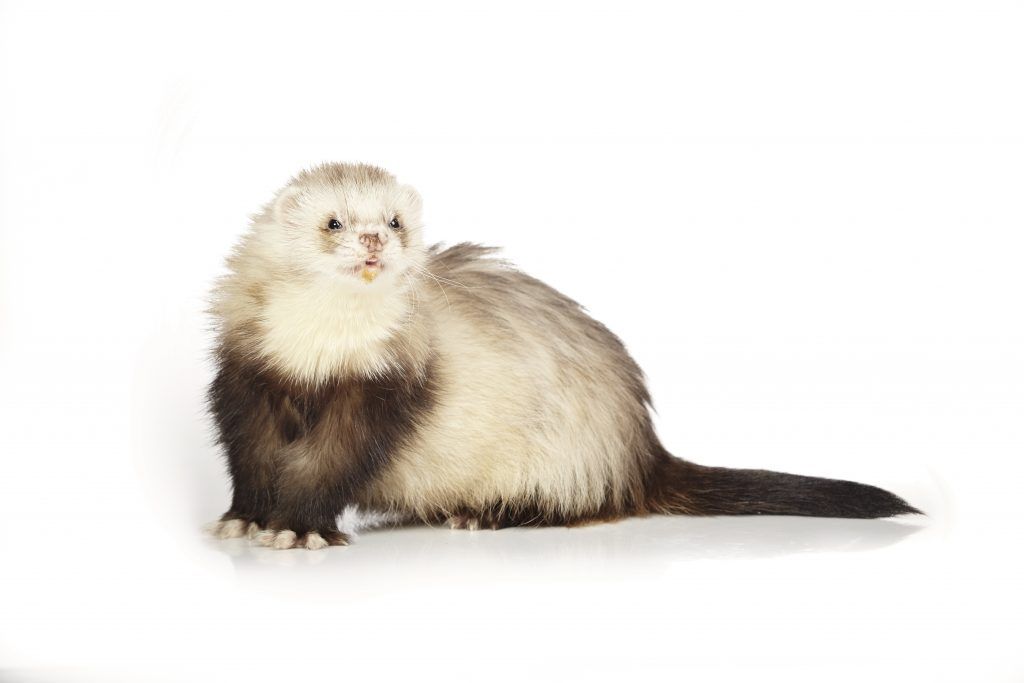
Ferret Panda
Siamese color
The Siamese color is similar to the color of the cats of the same breed. There is a V-shaped mask on the face. The nose is beige or pink, and the eyes are ruby or red.

Ferret siamese
Black color
Black (black solid) is distinguished by an almost uniform black color of the guard hair and down. From the side it looks monotonous. The nose and eyes match the color of the coat.
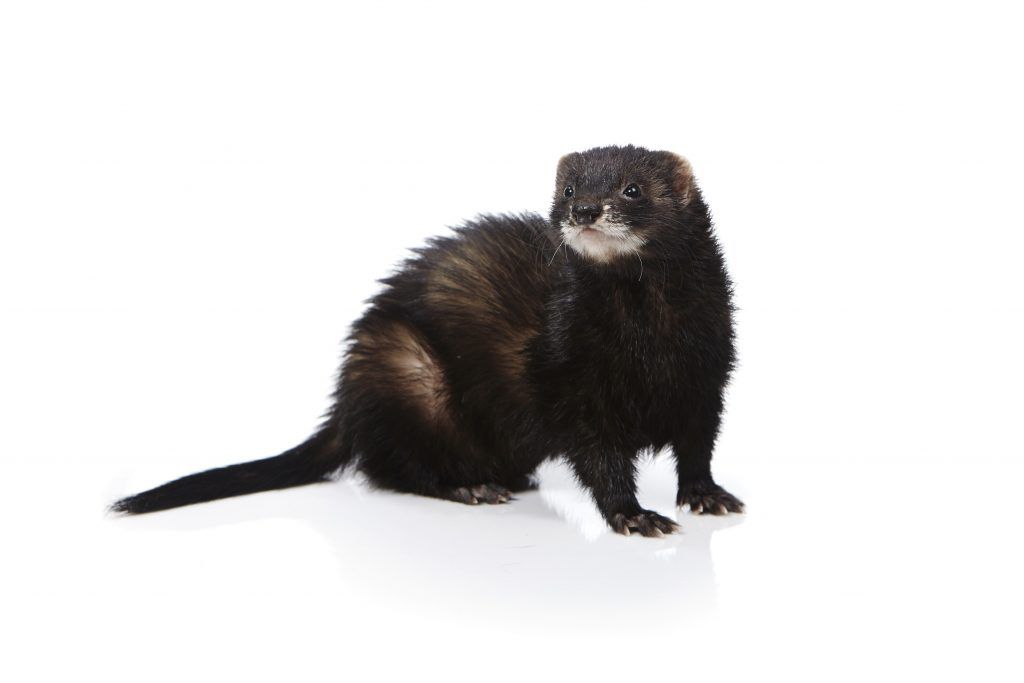
Black ferret
All these colors are quite similar to each other for an inexperienced breeder, so before buying this cute creature, you need to familiarize yourself in detail with the assortment. In order not to be fooled, you can view ferret colors with photos and names on the Internet or in ferret books.
Hair types in ferrets
Domestic ferrets differ from each other not only in color, but also in the type of coat. Thanks to the painstaking work of breeders, individuals with very long hair were bred, remaining fluffy even with minimal grooming. There are the following types:
- Angora. The length of the guard hair can reach 7-12 cm. Females have less long fur, but males are usually much fluffier. A distinctive feature of Angora ferrets is the unusual twisted shape of the nostrils.
- Half-angles have a hair length of 5 cm on the back and at least 3.5 cm on the belly. The phenotype of half-Angor ferrets is evaluated after the spring molt, because 3.5 cm is the length of the coat of a normal-haired ferret in winter.
- Normohaired. Hair length does not exceed 3 cm and 3.5 cm in winter. The undercoat is dense and dense.


